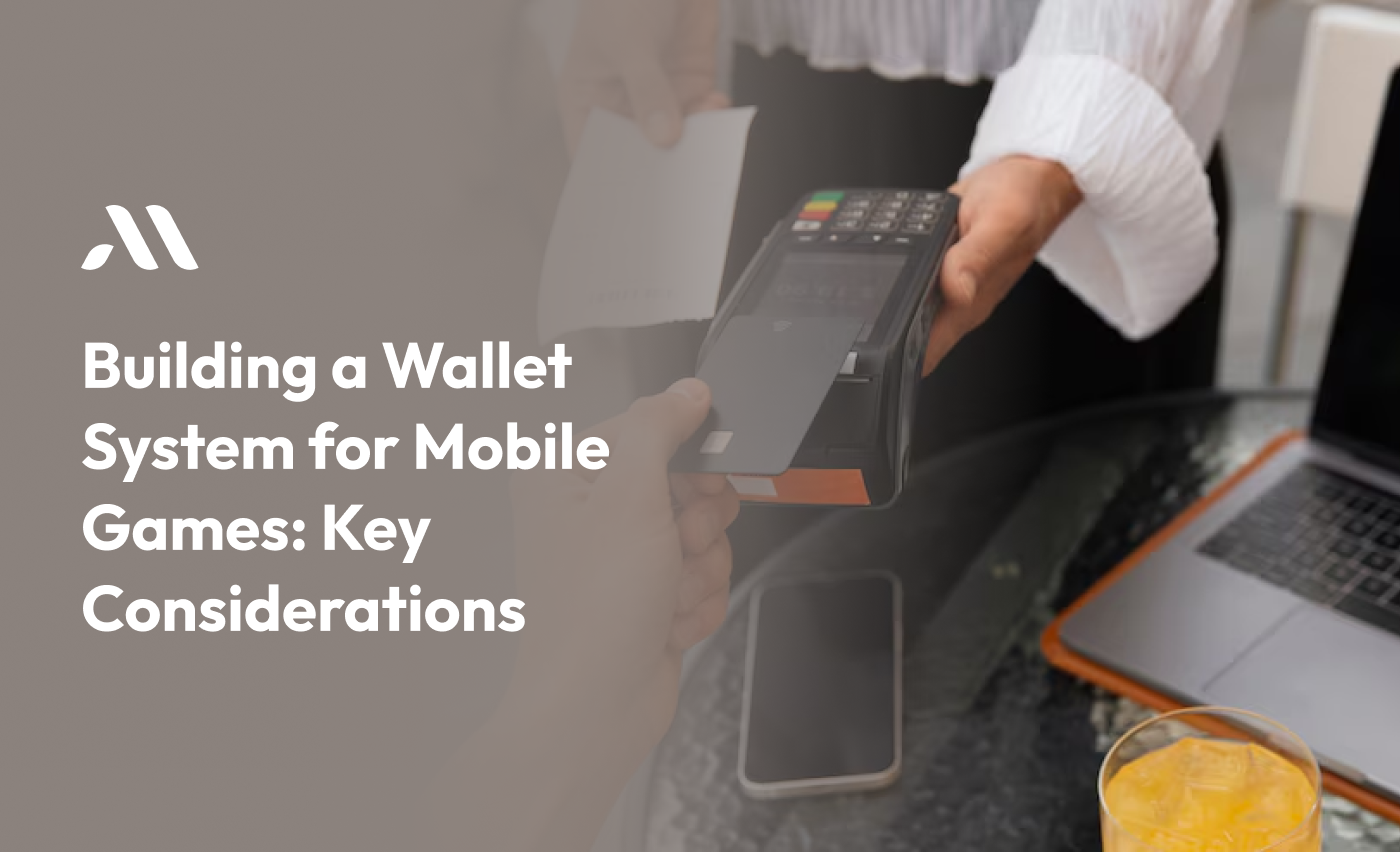Building a wallet system for mobile games is a crucial step for game developers who want to manage in-game purchases, rewards, and virtual currencies. This system helps players store and use their game currency to buy special items or features that improve their gaming experience. In this blog, we'll guide you through the process of creating a wallet system for mobile games in a way that's easy to understand.
What is a Wallet System in Mobile Games?
A wallet system for mobile games allows players to store and manage their virtual currency. Virtual currencies can include things like coins, gems, tokens, or any other in-game money. Players can earn or buy this currency and use it to make purchases within the game, like buying new characters, levels, or power-ups.
Having a wallet system for mobile games is important because it provides a seamless way for players to interact with the game's economy. It also creates more opportunities for developers to monetize their game by selling in-game currency or offering special rewards.
Why You Need a Wallet System
Before we dive into how to build a wallet system for mobile games, let's understand why it's important.
Monetization Opportunities: The primary reason for having a wallet system for mobile games is to create a way to earn money. Players can purchase virtual currency with real money, giving game developers a revenue stream.
Better User Experience: With a wallet system for mobile games, players don't need to use external payment methods every time they want to make a purchase. They can simply use the virtual currency they already have, which makes the process faster and easier.
Reward Systems: Many games reward players with in-game currency for completing tasks, watching ads, or playing regularly. A wallet system for mobile games ensures that these rewards are stored safely for future use.
Track Spending: For both developers and players, a wallet system for mobile games makes it easier to track how much currency is being spent and earned. This data can help developers improve the game's balance and economy.
Step-by-Step Guide to Building a Wallet System for Mobile Games
Here’s a simple guide to help you understand how to create a wallet system for mobile games:
1. Choose the Right Technology
You’ll need to choose a technology stack that fits your game’s requirements. Many developers prefer working with a custom software development company to build their wallet systems. A custom software development company can tailor the system to your specific needs and ensure that it's integrated well with your game.
Some popular technologies used for creating wallet systems include:
- Firebase for real-time data syncing
- MySQL or PostgreSQL for storing user data
- Blockchain technology for enhanced security
2. Create User Accounts
To build a wallet system for mobile games, you need to create user accounts. Players should have the ability to log in with their credentials. Each user account will be linked to their wallet, where they can store and manage virtual currency.
Here are a few things to remember:
- Secure Authentication: Ensure that user accounts are protected by strong authentication methods, such as email verification or two-factor authentication (2FA).
- Guest Accounts: Helps users to play as guests but provides the option to create a full account later to store their progress and currency.
Tip: Always prioritize security to protect users' data. Nearly 34% of gamers have concerns about the safety of their personal information.
3. Design the Wallet Interface
The wallet interface should be user-friendly and accessible. Players should easily see their balance and how they can earn or spend their currency.
Key Elements of a Wallet Interface:
- Current Balance: Show the player how much virtual currency they have.
- Purchase History: Players should be able to see the history of their transactions.
- Add Funds Button: Provide an option to buy more virtual currency using real money.
4. In-Game Currency Management
The next step is setting up the system that handles in-game currency. In a wallet system for mobile games, there are two common ways to add currency:
Earning Currency Through Gameplay: Players can earn currency by completing tasks, levelling up, or winning matches.
Buying Currency with Real Money: This involves integrating a payment gateway, such as Google Pay, Apple Pay, or PayPal, into your game. When a player buys a currency, their wallet balance should automatically update.
5. Integrate a Payment Gateway
To allow players to purchase virtual currency with real money, you need to integrate a payment gateway into your wallet system for mobile games.
Here are a few popular payment gateways you can use:
- Google Play Billing: This is for Android games.
- Apple In-App Purchase: For iOS games.
- Stripe: A popular payment processor that works on multiple platforms.
Note: Make sure the payment process is smooth and secure. Around 42% of players abandon purchases due to complicated payment processes.
6. Reward Players with Currency
You can increase player retention by rewarding them with virtual currency for completing specific tasks. In a wallet system for mobile games, players can earn currency through:
- Daily logins: Reward players for logging into the game daily.
- Watching ads: Provide small amounts of currency for watching short advertisements.
- Completing levels or challenges: Give players in-game currency as a reward for achievements.
Remember: The more engaging your reward system is, the more likely players will return to the game. 62% of mobile gamers play daily if there are rewards.
Also Read - Why SaaS Solutions Are the Future for Fintech Businesses
7. Track and Analyze Player Behavior
Having a wallet system for mobile games provides you with valuable data. You can track how players are using their virtual currency, which items they buy the most, and how often they make purchases.
By analyzing this data, you can make improvements to your game's economy. You might decide to adjust the price of certain items or introduce new ones that appeal to your audience.
8. Security Measures
When dealing with virtual currency, security is essential. You don’t want hackers to exploit your wallet system for mobile games. Implementing strong encryption methods and regular security checks is a must.
Here are a few security tips:
- Use SSL/TLS encryption for all transactions.
- Implement strong passwords and two-factor authentication.
- Regularly monitor your system for unusual activities.
9. Test and Launch the Wallet System
Before launching your wallet system, thoroughly test it. Ensure that players can easily add and spend currency, and check for any bugs or issues.
"A smooth user experience is key to retaining players. The wallet system should work seamlessly with the game's economy."
10. Continuous Updates
Once your wallet system for mobile games is live, continue to monitor it. Regular updates are necessary to fix bugs, improve security, and introduce new features.
Final Thoughts
Building a wallet system for mobile games is an essential part of managing in-game currencies and creating revenue streams. Whether you're working with a custom software development company or building the system in-house, following the steps outlined above will help you create a secure and user-friendly wallet.
Looking to build a wallet system for your mobile game? MicraSol can help! We specialize in creating custom app solutions that boost your game’s performance and player experience. Let’s work together to make your game stand out. Contact MicraSol today and bring your ideas to life!
Tip: Always listen to your players' feedback. The more you understand their needs, the better you can optimize your wallet system.
By providing a seamless and engaging wallet system for mobile games, you'll not only improve player satisfaction but also increase your game’s revenue.
FAQS
What is a wallet system in mobile games?
A wallet system in mobile games is like a digital wallet where players can store virtual currency (like coins, gems, or tokens). Players can earn or buy this currency and use it to buy items or upgrades in the game.
Why do mobile games need a wallet system?
A wallet system helps players easily manage their virtual money. It also helps game developers make money by allowing players to buy virtual currency with real money. Plus, it makes the game more fun by rewarding players with in-game currency for completing tasks.
How can players add money to their wallets in a mobile game?
Players can add virtual currency to their wallet by earning it through gameplay (like winning levels) or by buying it with real money through a payment system like Google Play or Apple Pay.
Is it safe to use a wallet system in mobile games?
Yes, when built correctly, a wallet system is very safe. Developers use secure payment gateways and encryption to protect your data. Many wallet systems also have strong passwords and two-factor authentication to keep accounts safe.
Can players earn virtual currency without paying real money?
Yes! Players can earn virtual currency by completing levels, logging in daily, or watching ads. This makes the game more exciting because players feel rewarded for playing.








